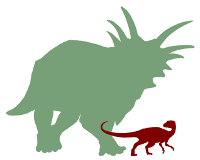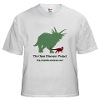It’s been a long time since we’ve featured one of our project participants. . .so, here’s a chat with a relative newcomer to the ODP, David Dreisigmeyer.
Tell us a little bit about yourself. Where are you from? What do you do (professionally)? Any other interesting facts?
I’m originally from Pennsylvania, where I attended Juniata College for my undergraduate degree in Pre-law. After taking a year off, I relocated to Boulder, CO and then started grad school at Colorado State University (in Fort Collins, CO). After a year in the Economics Department I switched over to the Mathematics Department. I was first introduced to data/pattern analysis here while working with Michael Kirby. After my M.S., I moved over to the Electrical Engineering Department for my Ph.D., specializing in signal processing and mathematical physics.
After grad school, I moved back to the Math Department at CSU for a postdoc in image processing and dimensionality reduction. After this, we (myself, my wife Lisa and our son Dyson) moved to Los Alamos for a second postdoc. During this time I did signal and image processing and some protein modeling. Now we’re in Pennsylvania while I’m at Pitt on a visiting position in the Medical School and the Math Department. Currently, in addition to the ODP, I’m doing some modeling of the influenza virus (epidemiology and evolution), ecology and some fault detection methods. I’m also just starting to help out on a developmental aid database.
My wife and I are really into climbing. We loved New Mexico, especially the trail running (and seeing those bears nice and close up like). Ghost Ranch was absolutely amazing (the hiking, not those other things you may be thinking of). And if you have the chance to visit Chaco Canyon you should definitely do so. My other interest are the American Revolution and history (a la Susan Wise Bauer).
Why did you decide to participate in the ODP?
First of all I always wanted to be a paleontologist until I was about twelve. A couple months ago I decided to look back into it (after spending some time reading about the field again). But, how could someone like me actually do research in this field? A google search on ‘data analysis dinosaur’ led me to the ODP. This what I had been looking for. And it was open source — double bonus!
So far, what has been the best part of the ODP for you, and why?
Being able to deal with the data, both the analysis and the ‘cleaning’. Since I’m a data analyst I love… data. And, I can’t imagine neater data than dino data.
What have you learned from your participation in the ODP?
Working with paleontologists is a great experience. It’s awesome to learn about the questions the field is interested in examining.
What advice would you give those who might be interested in helping out with the ODP?
Check everything. In a database this large, put together ‘by hand’, there’s bound to be some errors, it’s unavoidable. By having everyone help everyone else out the final product is only improved.



